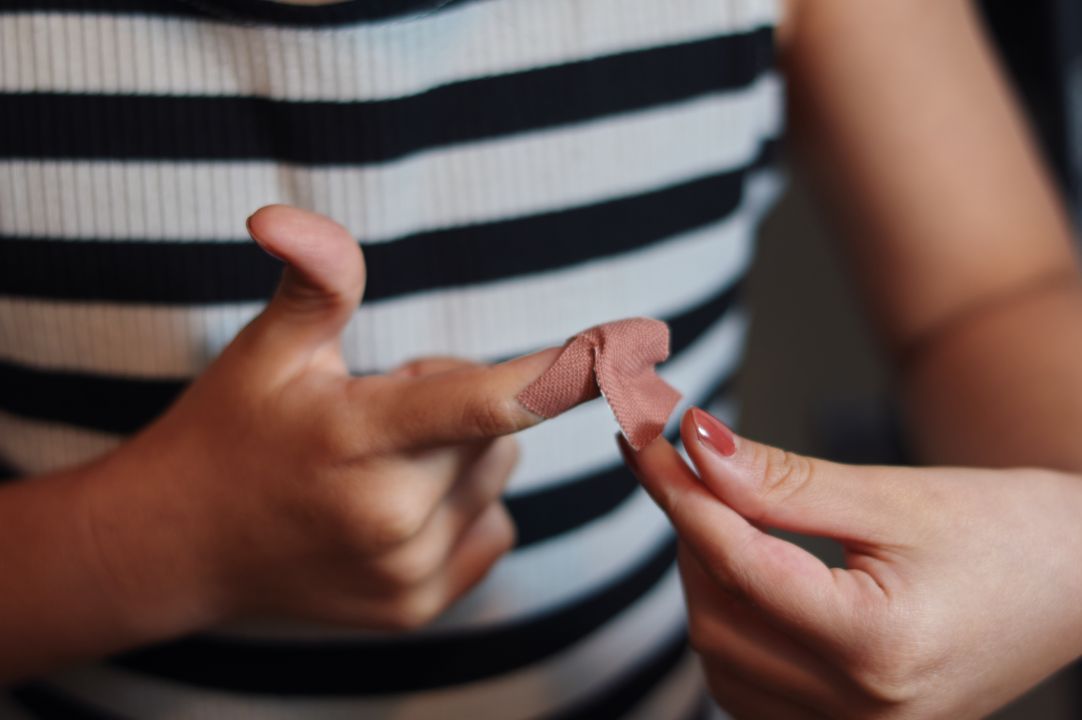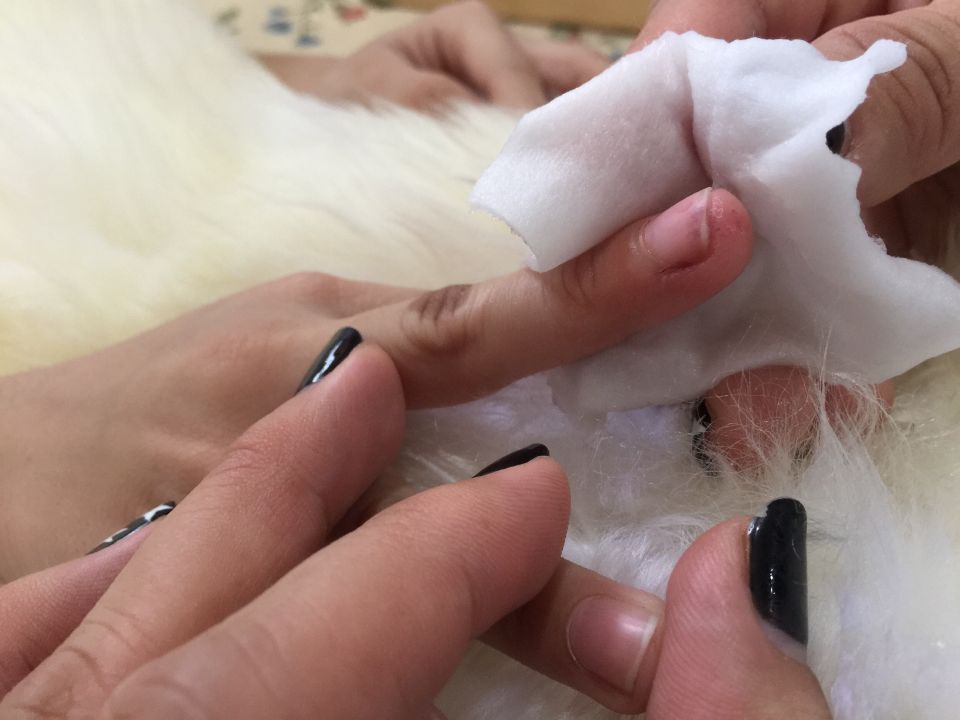A sprained finger is a common injury that occurs when one or more of the ligaments in the finger become stretched or torn. This injury is most often caused by a sudden impact or trauma to the finger, such as during a fall or sports activity.
The symptoms of a sprained finger typically include pain, swelling, and difficulty in moving the affected finger. While this may not always require medical attention, it is important to seek a diagnosis from a healthcare professional to rule out any fractures or other injuries.
Effective treatment options for a sprained finger may include rest, ice, compression, elevation (RICE), splints, or immobilisation devices. It is also important to engage in rehabilitation exercises to regain strength and flexibility in the affected finger.

Photo Credit: Studio_OMG, Envato
A finger sprain occurs when the ligaments connecting the finger bones are stretched or torn due to trauma. It is a common injury resulting from various activities, including sports, accidents, and falls.
There are different types of finger sprains, including:
Finger sprains are often caused by sudden impact or force on a finger. Some common causes include:
It is important to seek medical advice for proper diagnosis and treatment of a finger sprain. In some cases, this may be mistaken for a more serious injury, such as a fracture, and therefore, proper diagnosis is crucial.
A sprained finger generally presents with several symptoms that can vary in severity depending on the extent of the injury. The most common symptom is finger pain, which can range from mild to severe and may be accompanied by swelling and tenderness around the affected joint. A sprained finger may also make it difficult to move the finger or perform daily activities requiring hand use.
It’s essential to distinguish a sprained finger from other injuries that may present with similar symptoms, such as dislocated fingers or fractures. Unlike a fracture, which usually causes significant finger deformity, a sprained finger typically does not cause any visible abnormalities.

Photo Credit: weewendy, Envato
Diagnosing a sprained finger is important to properly assess the severity of the injury and rule out any other related conditions. Healthcare professionals will perform a thorough physical examination of the affected finger, assessing pain, swelling, and range of motion. Additional imaging tests, such as X-rays, may be required to rule out fractures or other injuries.
The physical examination will typically involve assessing the range of motion of the affected finger, checking for pain and swelling, and looking for any signs of deformity. Your healthcare professional may apply pressure to the affected finger or ask you to move it in different directions to help determine the extent of the injury. They may also assess the condition of the surrounding joints and ligaments to ensure they have not been compromised.
If a severe finger sprain is suspected, your healthcare professional may order additional imaging tests to rule out any fractures or other related conditions. X-rays are often used to assess the finger’s bone structure and determine if any fractures are present. Other imaging tests, such as MRI or CT scans, may be required for more severe cases to assess the extent of the soft tissue damage.
In conclusion, proper diagnosis of a sprained finger is crucial to determine the severity of the injury and develop an effective treatment plan. Seeking medical attention as soon as possible can help prevent further damage and ensure a smooth and successful recovery.
Upon experiencing a sprained finger, seeking immediate medical attention will aid in proper diagnosis and treatment. Treatment options for sprained fingers will vary depending on the severity of the injury. Here are some effective treatment options for sprained fingers:
In cases where the sprain is severe, a healthcare professional may advise using a splint or immobilisation device to allow for proper healing.
Rehabilitation exercises are an important part of treatment for a sprained finger. These exercises aim to restore the strength and flexibility of the finger. A healthcare professional may advise on specific exercises based on the severity of the injury.
Following through with the advised treatment plan is essential to achieve optimal results and prevent re-injury. Seeking medical attention and adhering to a proper treatment plan can also aid in minimising the risk of complications.
Recovering from a sprained finger can take some time, but there are steps you can take to speed up the process and prevent future injuries.

Photo Credit: LightFieldStudios, Envato
It is crucial to listen to the advice of your healthcare professional and follow their treatment plan. This may include rest, ice, compression, and elevation (RICE), splints, or rehabilitation exercises. Taking the necessary time to heal properly can help prevent re-injury and future complications.
Recovery time for a sprained finger varies depending on the severity of the injury. Mild to moderate sprains may take 1-3 weeks to heal, while severe sprains can take up to several months. It is important to give your finger enough time to heal and not rush the recovery process.
Performing strength and flexibility exercises can help prevent future finger sprains. Strengthening your fingers, hands, and wrists can increase the stability of your joints, reducing the risk of future injuries. Some effective exercises include grip strengthening, finger resistance exercises, and wrist curls. It is important to consult with your healthcare professional before starting any exercise program.
Using proper techniques during physical activities can also help prevent finger sprains. This includes using appropriate grip strength and avoiding repetitive motions that strain your fingers. It is also important to wear protective gear, such as gloves or wrist guards when engaging in high-risk activities.
By taking these steps, you can ensure a speedy recovery and minimise the risk of future finger sprains. Prevention is key, so be mindful of your fingers and hands during physical activities.
A sprained finger occurs when the ligaments of the finger are stretched or torn, usually due to a sudden impact or excessive force.
A: A sprained finger can be caused by various factors, such as sports injuries, accidents, falls, or repetitive motions that strain the finger joints.
A: Symptoms of a sprained finger may include pain, swelling, tenderness, difficulty moving the finger, and possible bruising around the affected area.
It is advisable to seek medical advice to diagnose and assess a sprained finger properly. A healthcare professional can perform a physical examination and may recommend imaging tests to rule out other underlying injuries.
Treatment options for sprained fingers include rest, ice, compression, and elevation (RICE), splints or immobilisation devices, and rehabilitation exercises to regain strength and flexibility.
Recovery time for a sprained finger varies depending on the severity of the injury. It may take a few days to several weeks for complete healing and return to normal activities.
A: To prevent sprained fingers, it is important to follow proper techniques during physical activities, use protective gear, and perform finger-strengthening exercises. Consulting with a healthcare professional for guidance can also be beneficial.